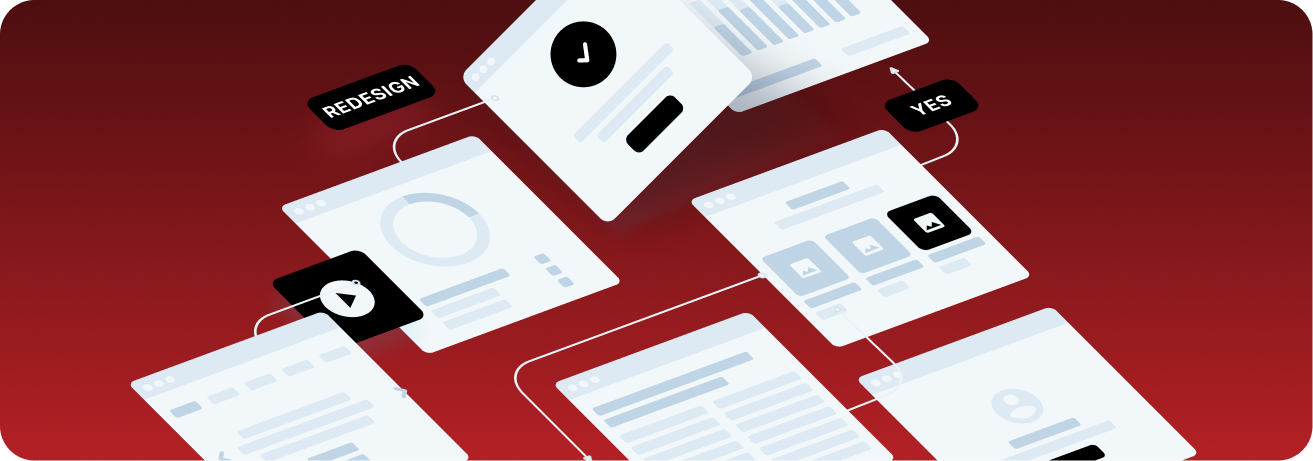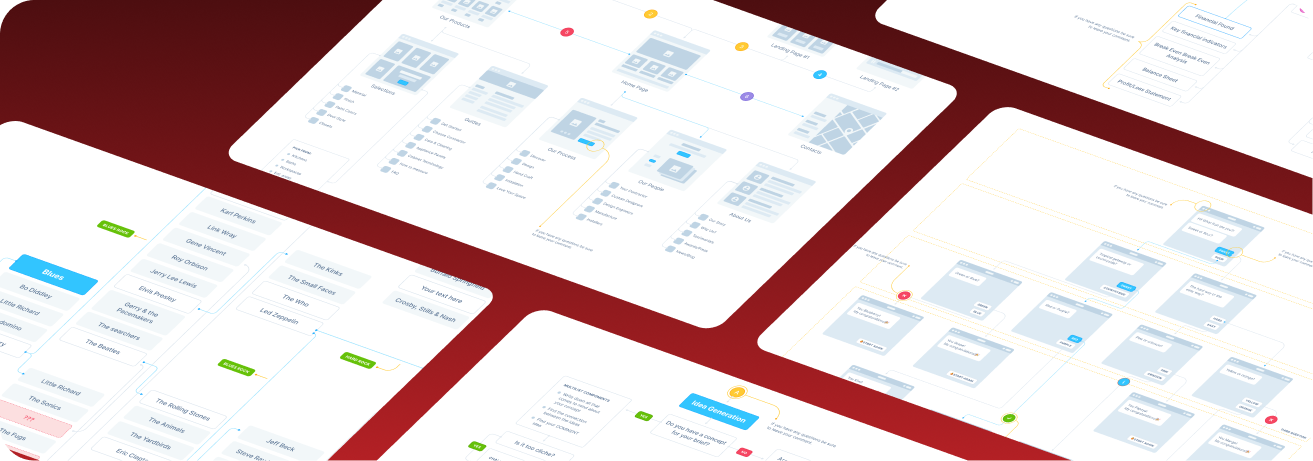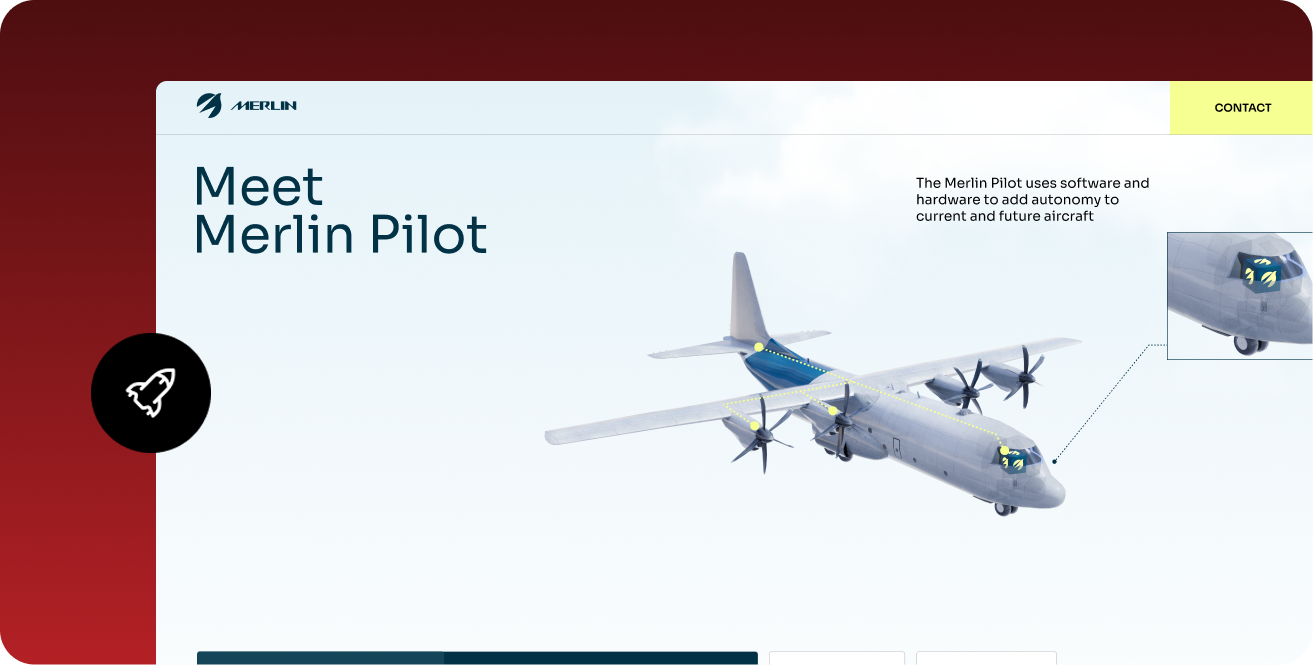Is your website feeling a bit outdated or hard to navigate? If visitors are bouncing off your site faster than you can say “refresh,” it might be time for a redesign. Look out for signs like slow load times, a lack of mobile responsiveness, or low conversion rates—these indicate that your site isn’t meeting user expectations. If your brand has evolved but your website hasn’t kept pace, or if your competitors are stepping up their game, it’s important to realign your online presence with your business goals.
A website redesign is an opportunity to breathe new life into your digital presence. However, with so many elements to consider, the key to a successful revamp lies in thorough planning and strategic decision-making. Let’s break down the steps to a smooth redesign that drives results.
Step 1: Start with Why

Before diving into a redesign, it’s essential to understand why you’re doing it. Having a clear purpose allows you to set specific, measurable objectives that reflect your broader business goals. Here’s why understanding your purpose matters and what some common objectives might look like:
- Improve User Experience (UX): Enhance navigation, layout, and overall usability to make it easier for visitors to find information and engage with your content.
- Boost Conversion Rates: Optimize calls-to-action (CTAs) and user pathways to turn more visitors into leads or customers, ultimately driving sales and engagement.
- Update Branding: Align the website’s design and messaging with your current brand identity to ensure consistency and strengthen brand recognition.
- Enhance Mobile Responsiveness: Create a seamless experience across all devices, ensuring the site is fully responsive and user-friendly for mobile users.
- Increase Search Engine Optimization (SEO): Implement best practices for SEO, including faster load times, optimized content, and better site structure, to improve search engine rankings and visibility.
Step 2: Review and Audit
Before implementing any changes, it’s important to assess what aspects of your website are effective and which ones are underperforming. Conducting an audit will provide useful insights into your site’s performance and highlight opportunities for improvement.
Utilize tools like Google Analytics to evaluate metrics such as traffic, user behavior, bounce rates, and conversion pathways. Tools like Hotjar can help visualize user interactions, revealing where users click and how far they scroll before leaving. SEMrush is useful for pinpointing SEO problems, monitoring keyword performance, and analyzing backlinks.
Here are 4 key metrics to examine:
- Traffic: Total site visits, unique visitors, and the sources of your traffic.
- Engagement: Metrics such as bounce rate, average session duration, and the number of pages viewed per session.
- Conversions: Track goals and e-commerce performance to evaluate how effectively your site turns visitors into customers.
- SEO Performance: Assess keyword rankings, site loading speed, mobile compatibility, and any technical SEO issues.
In addition to evaluating your website, you need to have a solid grasp of your market and competitors. Investigate industry trends and analyze competitor sites to identify their strengths and best practices.
- Identify Key Competitors: Use tools like SimilarWeb to pinpoint your main competitors in the industry.
- Evaluate Their Websites: Assess aspects such as design, usability, content quality, SEO effectiveness, and overall user experience. Take note of features you admire and areas that could be enhanced.
Step 3: Initial decisions

Choose the Right Platform
Choosing the right platform will help you navigate smoothly toward your objectives. Here are some key considerations to keep in mind when selecting the best fit for your website:
- Flexibility for Customization: Ensure the platform allows for the necessary customizations without imposing excessive limitations, so you can tailor it to your unique needs.
- Search Engine Optimization: Prioritize platforms equipped with robust SEO features and tools that can help improve your visibility in search engine results.
- Integration Capabilities: Look for platforms that can easily integrate with other essential tools, such as CRM systems, email marketing services, and analytics tools, to streamline your marketing efforts.
- Security Features: Evaluate the platform’s security measures, especially if you’ll be handling sensitive customer data or e-commerce transactions, to protect against potential threats.
- Growth Potential: Assess whether the platform can scale with your business, allowing increased traffic and additional functionalities as you grow.
- Customer Support and Community Engagement: Opt for platforms that provide strong customer support and have an active user community, as these can be invaluable resources for troubleshooting and learning.
- Cost Considerations: Keep in mind the overall costs associated with the platform, including hosting fees, maintenance, and any additional features or plugins you may need.
In-House vs. Agency: Which Is Right for Your Redesign?
When it comes to redesigning your website, one important decision is whether to keep the project in-house or bring in an agency. Both options come with pros and cons, so the choice often depends on your goals, team’s capabilities, and the resources available.
Going In-House
An in-house approach gives you more control over every aspect of the project. If your team has strong design, development, and marketing expertise, you can leverage this to tailor the redesign closely to your brand’s vision. Handling the redesign internally may also facilitate quicker decision-making and alignment with ongoing business strategies. However, in-house projects often require a significant time commitment and may need team members to take on additional responsibilities, potentially impacting other priorities.
- Ideal for:
- Teams with specialized skills in web design, development, and SEO.
- Businesses looking for granular control over each step of the redesign.
- Organizations with flexible timelines that allow for a more iterative process.
Partnering with an Agency
On the other hand, partnering with an agency brings in a team of seasoned professionals who can streamline the redesign process, drawing from extensive experience across industries and project types. Agencies typically offer a comprehensive, strategic approach, from initial discovery sessions to post-launch optimization. Although this option often requires a larger budget, an agency can deliver a high-impact website that’s optimized for performance, user experience, and scalability, often faster than an in-house team with limited bandwidth.
- Ideal for:
- Businesses without specialized web development or design teams.
- Organizations that need the project completed within a strict timeline.
- Companies looking for fresh perspectives and the latest best practices in web design.
Making the Right Choice
Ultimately, the decision hinges on your goals, resources, and project complexity. For a seamless process, some companies even choose a hybrid approach, where an in-house team handles specific elements—like content creation—while an agency oversees design and development. Whichever route you take, ensure your team is aligned on priorities and equipped with the resources needed to bring the vision to life.
Step 4: Let’s Get to It!
Once the analysis is complete, the purpose is clear, and you understand what isn’t working on your site, you’re ready to dive into the redesign process. Here are essential steps to guide you through revamping your website:
- Create a Sitemap
Outline the structure of your revamped site, detailing main pages and their connections. A well-organized sitemap enhances navigation, improves user flow, and aids in search engine indexing, making it easier for users and crawlers to access relevant content. - Develop Wireframes and Mockups
Create wireframes to visualize the layout of key pages, followed by detailed mockups that include design elements like colors and fonts. This helps refine your ideas and ensures that the design aligns with user expectations before development begins. - Set a Budget and Timeline
Identify potential costs, including design, development, and content creation, while setting aside a contingency fund for unexpected expenses. Establish a timeline with clear milestones for each project phase to keep everything on track and accountable. - Choose a Development Approach
Decide whether to use a website builder, hire a freelancer, or work with a web agency based on your needs and budget. Evaluate each option’s pros and cons, including cost and ongoing support, to find the best fit for your project. - Focus on Content Strategy
Assess your existing content and plan for updates or new additions that address user needs and align with your SEO goals. Create an editorial calendar to schedule content creation and ensure consistency in messaging and branding across your site.
Step 5: Post-Launch

Once your revamped site is live, continuous monitoring of its performance is essential. Use analytics tools to track user behavior, such as page views and conversion rates, to identify areas for improvement. Consistent maintenance ensures your website runs smoothly and securely, so regularly check for updates, address security vulnerabilities, and fix broken links to avoid negative impacts on user experience and search rankings.
Keeping your content fresh is important for engagement and SEO performance. Regularly update blog posts and product information to encourage users to return and signal to search engines that your site is active. Ongoing performance monitoring is also important; track metrics like site speed and uptime, as slow loading times can frustrate visitors. Tools like Google PageSpeed Insights can help you identify areas needing enhancement.
Finally, regularly review your site for bugs and functionality issues to prevent traffic loss. By prioritizing performance monitoring, maintenance, content updates, and bug fixes, you’ll ensure your website remains effective and aligned with your business goals long after it launches.
It Is Worth the Effort!
Don’t let this extensive to-do list overwhelm you. While the design process can be time-consuming, costly, and demanding, the benefits are well worth it. A website tailored to your needs will not only help you achieve your goals but also elevate your business to the next level. And if you need a little extra support, at Nika we’re always here to help!
